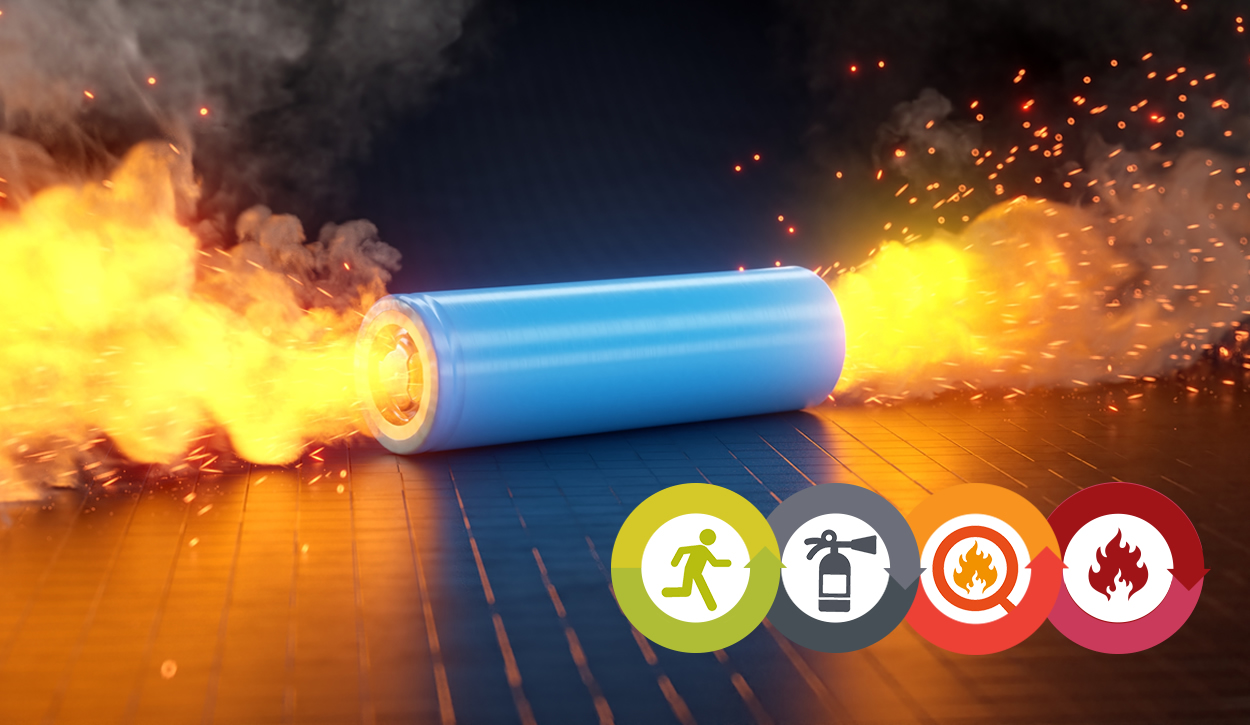Fire Crews Tackle Blaze Sparked By Exploding Lithium Batteries
Firefighters in Nottinghamshire were called to a dramatic blaze in Worksop after approximately two tonnes of discarded lithium-ion batteries ignited and began exploding. The incident marked the first use of a new firefighting tool designed to improve response to rural fires.

Nottinghamshire Fire and Rescue Service deployed the Polaris, a compact pump vehicle equipped with an advanced misting lance, allowing crews to combat fires more effectively in hard-to-reach areas. The tool works by inserting a long, thin tube directly into the heart of the blaze, delivering a fine water mist from within rather than just tackling flames from above. Group Manager Tom Staples, who oversees operations in North Nottinghamshire, confirmed that more Polaris units and L200 support vehicles will soon be rolled out across the county. “I’m really pleased to see the Polaris and L200 being put to good use especially for incidents that our traditional fire engines have struggled to access,” he said.
The misting system (also known as a water mist fire suppression tool) emits high-pressure microdroplets that suppress fires by rapidly cooling hot gases, displacing oxygen, and soaking the burning material. It’s considered more efficient and less water-intensive than conventional fire fighting methods. This latest incident underscores growing concerns around the safe disposal of lithium-ion batteries, which continue to pose significant fire risks when improperly handled.
Best Practices for Safe Storage
- Store in a cool, dry, shaded and well-ventilated area
- Use fire-resistant storage containers or battery cabinets
- Keep batteries away from flammable materials
- Avoid stacking or crushing batteries
- Ensure good battery management (especially for large-scale storage)
- Label and isolate damaged or recalled batteries
- Install smoke and heat detectors in storage areas
- Train staff on emergency response procedures
Fire Risk Dangers of Storing Lithium-Ion Batteries
1. Thermal Runaway
What it is: A chain reaction where the battery cell overheats, leading to further temperature increases and possible ignition.
Trigger points: Can be caused by overcharging, external heat, physical damage, or internal defects.
Outcome: A battery in thermal runaway can emit flames, release toxic gases, and cause explosions.
2. Overcharging or Overheating
Charging beyond recommended limits can cause internal pressure buildup, which may rupture the battery casing or trigger thermal runaway.
3. Physical Damage
Dropping, puncturing, or crushing a battery can damage the internal separator between the anode and cathode.
A short circuit may occur, leading to fire or explosion.
4. Improper Storage Conditions
Temperature sensitivity: Batteries stored in hot environments (>60°C / 140°F) are at higher risk of degradation and spontaneous ignition.
Humidity: Excess moisture can corrode battery components, potentially leading to internal shorts.
5. Incompatible Storage with Other Materials
Storing lithium-ion batteries near flammable substances, such as paper, oils, or solvents, increases the fire hazard.
If a battery catches fire, nearby combustibles can cause a much larger blaze.
6. Poor Battery Management Systems (BMS)
In bulk storage (like warehouses), lack of a proper monitoring system can result in unnoticed issues like overheating or battery faults.
7. Defective or Low-Quality Batteries
Cheap or counterfeit batteries may lack essential safety features such as temperature sensors, proper insulation, or shut off mechanisms.
These are significantly more prone to failure and fire.
#FireAlarms #FireRiskAssessment #FireSafetyEquipment #FireAlarmMaintenance #AccessControl #CCTV

